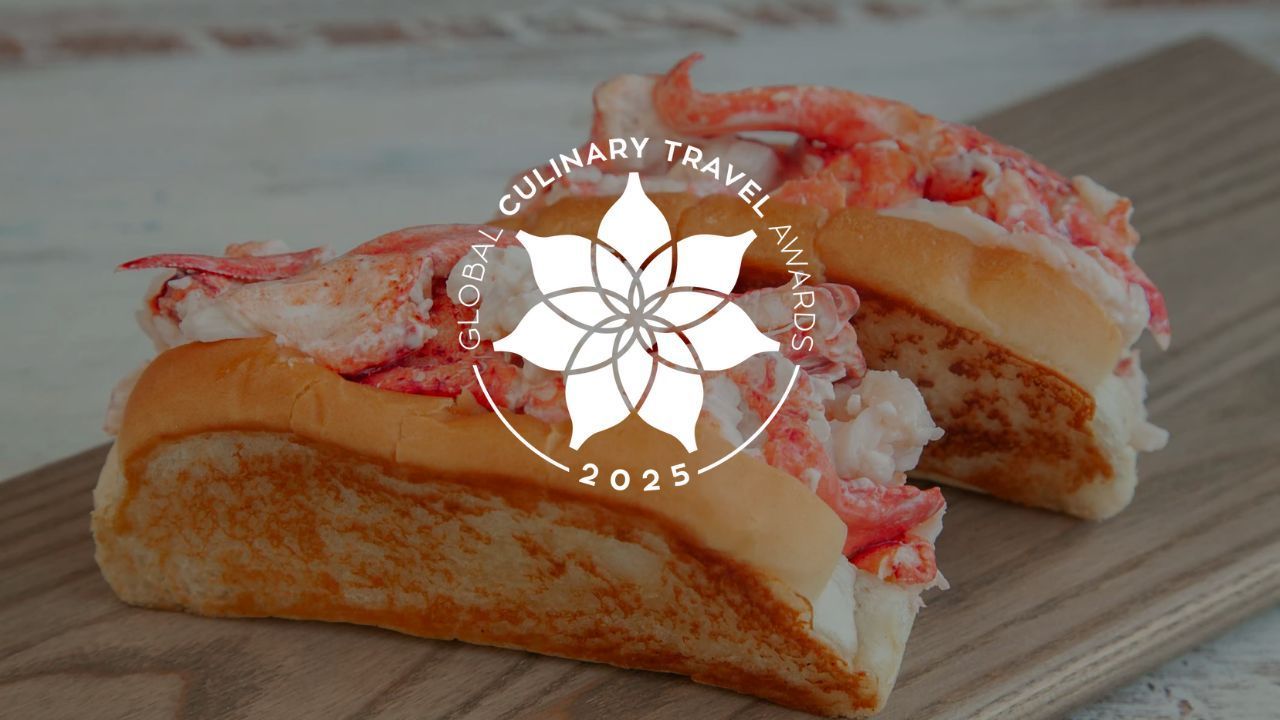The Rise of the Underdogs

Part 3 in The Power of Food Tourism , a new thought leadership series about the tremendous and undeniable power of food and beverage tourism.
Today’s global society has expanded to the point that many of us are now detached from our culture, the land around us and even our families. Every family, and every culture, has stories about how food has been prepared and cooked over generations. Most of the stories include the use of ingredients that are fresh and local to the area. Food and beverage tourism (a.k.a. food tourism , culinary tourism and gastronomy tourism), is a way to reflect on our past influences and who we are today – the culture where we live.
While every destination’s cuisine offers a litany of unique products and experiences, some destinations are able to offer a wider variety of foods and culinary experiences than others. However, lesser-developed destinations should not be shy about what they have. As the founder of the food tourism industry, I stand behind my belief that “Almost every destination on Earth has a unique story to tell, and its food is just the foundation.“
Case Study: Bristol, UK
While there are examples of culinary destinations beating the odds, one of our favorites is Bristol, UK. Bristol is an ideal success story to illustrate the impact of outside expertise on local culinary tourism development, not just for tourism growth, but for economic and sociocultural growth as well.
If you are not familiar with Bristol, at first it may seem off-the-beaten-track, especially when it comes to food and beverage. Located in southwest England, the city is reachable via a 75-minute train from London. Bristol was also one of the British centers of the disgraceful triangle slave trade, and as such was one of the first locations where products such as cacao, sugar, rum, textiles, and pottery, reached England. Combined with its long history as a loyalist center during the English Civil Wars, and large-scale destruction during the Second World War at the hands of the Germans and the city’s subsequent rebirth, the Bristol of today has no end of stories when it comes to its food and beverages. However, with London so close and with its significantly greater cultural, geographic, and historical influences, along with many more people and opportunities, Bristol has understandably had a hard time trying to compete.
Even though Bristol lives in the shadow of London, the Bristol area knows its competitive advantages. For example, Bristol has lower food prices, well-developed value chains, and perhaps most importantly, a smaller and more manageable population of 680,000 people which gives it the base of a strong community. Bristol is located near the mouth of the Avon and Frome rivers, which provide it with fertile farmland and an accessible shipping port. Bristol’s location allows it to integrate its food and beverage products with everything else the city offers. Bristol only needed to understand and accept the demand for its culinary products and experiences and craft the right offers. For this, Bristol sought out the advice of the World Food Travel Association (Bristol 2018-2023 Food and Beverage Tourism Strategy, 2018, P. 114-155).
Through deep analysis and the process of PsychoCulinary Profiling (an analysis of the differences among consumer dining preferences), Bristol learned that it had a bright future focusing on its locally grown and manufactured products; its artisanal and craft products; its sustainably-minded vegetarian and vegan restaurants; and its extensive base of food and beverage events.
In order to attract the growing Localist travelers (those with a PsychoCulinary profile that places importance on local cuisine first and foremost), Bristol converted its inglorious history into its present opportunities. At Wapping Wharf , developers turned a 250-year-old shipbuilding facility into a collaborative space that prominently features the city’s wide variety of food and crafts. For example, in the facility, Buxton & Bird sells traditional English pies, while Salt & Malt offers arguably the city’s best fish and chips. However, Wapping Wharf vendors also offer cuisine from India, the Caribbean, and Spain, among the 150+ other regions that have a history of immigration to Bristol. Spanish-influenced dishes found at Paco Tapas and Bravas restaurants are particularly popular among local university students, many of whom are Spanish natives who study in Bristol to learn English. At Wapping Wharf, the Harbourside Street Food Market and St Nick’s Market, among many other locations, tourists can find a large selection of vegan and vegetarian restaurants. In fact, Bristol was recently named the 12th best city in the world for vegan and vegetarian food. Talk about having the right product at the right time!
While Bristol has a wide variety of interesting restaurants and culinary influences, the city is also known for its food-themed events. The city holds an annual event called Bristol Food Connections that focuses on having a direct connection with how food is sourced, made and enjoyed. It gives event-goers the chance to “discover everything from foraging to fish and chips. ” The event is actually nearly 100 different events that take place over 2 weeks, attracting tens of thousands of patrons. In addition, Bristol has an annual Craft Beer Festival, a Wing Fest, as well as constantly changing pop-up bars, and regularly scheduled gin boat tours and cream tea cruises. Bristol was able to identify its right markets based on the WFTA’s expert advice and is planning new post-pandemic events for its growing food and beverage tourist base.
As a result of Bristol’s efforts, in 2019, the city received accolades as the World’s Best Culinary Destination. Bristol’s restaurants have been rising in the ranks, as the city now boasts five Michelin star restaurants despite its small population. The city’s destination marketers continue to plan and think ahead to what Bristol’s future food leadership will look like.
Iceland and Grenada – Culinary Diamonds in the Rough
Some destination marketing organizations and government bodies feel that investing in outside expertise is an unnecessary expense. However, impartial third-party expertise reveals things that locals do not always see, thereby uncovering new opportunities for the area, like with Bristol. Third-party expertise can help destination marketers to connect value chains in order to package better food and beverage products and experiences, for visitors and locals alike.
Iceland is one such example of connecting previously disparate value chains. The country is an isolated island, with only 354,000 residents , and was constrained by climate, geography and homogeneity, which precluded the creation of attractive culinary offerings for visitors. After the country’s 2008 financial collapse, the government embraced a new focus on tourism as an important and stable source of revenue. In a place where very little grows, Iceland encouraged the building of greenhouses, like Friðheimar , and invested in the human capital of its chefs in order to create value from the plant to the plate. The influx of foreign tourists and their demands also helped to influence an evolution of Icelandic cuisine. So again, outside influences helped food tourism to develop for the better.
An excellent example of a diamond in the rough is the Caribbean island nation of Grenada. For a country with a population of only 113,000 , it is especially difficult to differentiate the country among international food-loving travelers, largely because people do not have many expectations, positive or negative, about Grenada’s food scene. During the days of the Caribbean slave trade, Grenada was known for its sugar production and later, its cacao production. However, today, the leading food export is nutmeg. While Grenada has long referred to itself as the “Spice of the Caribbean” it was not until the country invited external advice, was it able to fully identify its culinary tourism opportunities. Consequently, Grenada became the first country to be named a Culinary Capital by the World Food Travel Association as a result of its efforts.
Third-party expertise can help to promote a destination’s culinary image. The city of Chengdu in China perhaps took best advantage of outside advice to improve its social media marketing as a culinary destination. For many years, Chengdu has had challenges overseas to separate its own distinct regional cuisine from that of the rest of China. Dishes like Kung Pao Chicken, Twice Cooked Pork, Dan Dan Noodles, and Hot Pot , are internationally famous, yet few people know that these dishes originated from the Chengdu area. The area’s Szechuan cuisine had never been associated with Chengdu and until very recently, people did not travel to Chengdu for the main reason of eating. Over the past several years, the local government developed a TikTok campaign to show short videos of mouth-watering images of food and associate it with Chengdu as a culinary destination. Outside expertise designed a specific marketing campaign to reach food-loving travelers, and Chengdu was able to capitalize on the opportunity and grow its image of Chengdu as a culinary destination. As a result, officials expect 11.24% GDP growth from tourism alone, when travel normalizes again, of course.
Conclusion
Bristol UK, Iceland and Grenada all benefited from third-party expertise and circumstances to further develop and promote their food and beverage products and experiences to travelers.
Outside expertise can also help identify and preempt potential gaps in destination management, for example with regard to food systems, export, training, innovation and stakeholder engagement. The devil is in the details, yet it is getting those details right that will make the biggest impact on culinary destination development and promotion.
Written by Ben Palmer. Edited by Erik Wolf.











